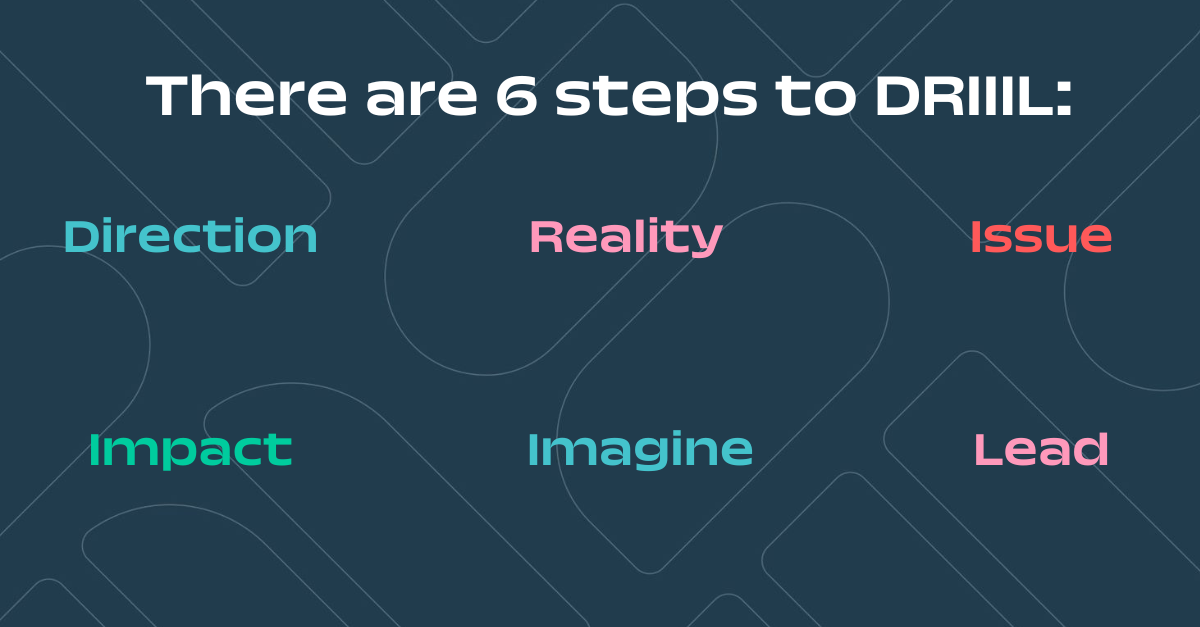As great salespeople, we need to be excellent at finding the right solutions for our customers. A quality solution is when you help your customer do one of the following four things: Solve, Improve, Increase or Save something within their business. A quality solution is tailored to the needs of the customer, so that when it is presented it is seen as a perfect fit.
The problem is that many salespeople focus too much on the solution. They try to solve problems too quickly, and offer solutions before the customer is fully bought in.
In fact, the art of delivering a quality solution starts way before the pitch. It comes from first taking the time to clearly define the customer’s problem.
“If I had an hour to save the world, I’d spend 59 minutes defining the problem, and one minute coming up with the solution” – Albert Einstein.
In this blog, we share with you a questioning process called DRIIIL.
DRIIIL is an advanced questioning technique, for face to face solution sales. DRIIIL helps you uncover customers needs and define their challenges so that when you present the solution, you are certain that you will have 100% buy-in from the customer.
The DRIIIL Questioning Process

Let’s have a look at each part in a bit more detail.
1) Direction: set the direction of the meeting
Ask:
“What do you want to get out of this meeting?”
“What’s the most important thing you want to achieve today?”
Why it works:
Most salespeople will start the meeting with their own objectives. Asking the customer to state their objectives is a professional and assertive way to start the meeting. It allows you to tick off all of their agenda points. And, interestingly, the customer almost always replies with their biggest problem, need or pain point. A great gateway into your subsequent questioning.
2) Reality: explore their current situation, probing for any issues
Ask:
“Tell me about your current set up in regard to…”
“What challenges are you facing, in regard to…”
Why it works
Asking leading questions about their current issues (specific to areas you can help), allows you to quickly pick up on any challenges, problems, or needs they have. It allows you to quickly understand how you can best help them.
3) Issue: drill down into the issue
Ask:
“Tell me more about that…”
“Explain to me how that…”
“What specifically do you mean by…”
Ensure that you focus on using Open Questions a this stage of the process:
“Who… What… When… Where… Why… How….etc “
Why it works
Often a surface level complaint is not actually the real problem. These questions help you dive deeper under the surface and define the customer’s real issues.
These questions also create trust and rapport as the customer feels listened to and understands that you care.
4) Impact: find the impact
Ask:
“How does that affect your business?”
“What impact does that have on your business?”
“How does that impact you – your team, your profit margins, your customers?”
Why it works
These questions are some of the best questions in sales. This is because they shift the conversation away from the problem (the rational business issue) and towards the impact (the emotional, personal impact). Talking about the impact allows you to fully understand the bigger picture and open up the emotional side of the brain; a key influencer in all purchasing decisions.
5) Imagine: Get the customer to paint a picture of the solution
Ask:
“In your mind, what would help to resolve these issues?
“What does a good solution look like?”
“How could you see us working with you?”
“What return on investment are you looking for?”
Why it works
If a customer tells you exactly what they want then you know exactly what to offer them as a solution. Plus, if a customer starts to visualise your solution in their head, they have already started to imagine working with you. They are bought into the idea as they helped to create it.
6) Lead: How can I help
Ask:
“So, how can I help with this issue?”
Why it works
Although this may seem like a strange question to ask at the end of the questioning process, it really works. This is because customers tend to respond to this question in one of two ways:
- They tell you exactly how you can help (i.e. pitching your solution back to you)
- Or they say, “I don’t know, you tell me” (leading you nicely into the presentation of your solution)
Summary
Both outcomes allow you transition naturally to your proposal, and present a quality solution you are confident is exactly what the customer desires.
In summary, DRIIIL is an advanced questioning technique that can be used to support high value solution sales.
As with any questioning process, the 6 steps are not set in stone, and it is common to move around the steps to fit in with the natural flow of the conversation.
However, using these questions will allow you to uncover customers needs and clearly define their problems, increase customer desire for your offer and ultimately enable you to close more high-value deals.
Are you looking for your next salesperson? Upload you vacancy today to see how we can help.

